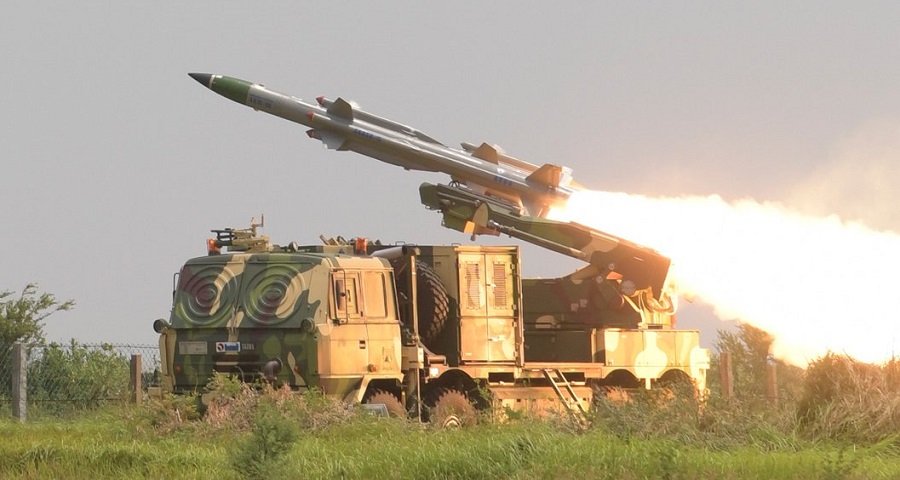
Taiwan Applauds India’s Akash, MR-SAM for Missile Intercepts
Taiwanese media outlets have praised the effectiveness of India’s homegrown air defense systems—Akash and MR-SAM—for their impressive performance during the India-Pakistan conflict in May 2025, widely referred to as Operation Sindoor. The systems reportedly played a crucial role in intercepting Pakistani missile and drone attacks, many of which were based on Chinese-origin platforms.
Following the April 22 Pahalgam terror attack, which killed 26 civilians, the conflict escalated rapidly with Pakistan launching salvos of short-range ballistic missiles (SRBMs), guided rockets, and drones toward Indian civilian and military installations. India’s indigenous air defense systems, including the Akash and Medium-Range Surface-to-Air Missile (MR-SAM), were credited with intercepting several high-speed aerial threats with precision, drawing attention from Taiwan’s defense commentators.
Akash and MR-SAM Neutralized Chinese-Origin Missiles
The Akash system, developed by the Defence Research and Development Organisation (DRDO) and produced by Bharat Electronics Limited (BEL), is designed to engage multiple targets at medium range, including drones, cruise missiles, and fighter aircraft. During Operation Sindoor, it reportedly neutralized several targets, including FATAH-I and II guided rockets and HATF-I SRBMs.
The MR-SAM system, jointly developed by DRDO and Israel Aerospace Industries (IAI), played a complementary role by extending interception capabilities to longer distances and higher altitudes. Its role in countering high-velocity missile threats underscored India’s growing air defense depth and layered deterrence.
Taiwanese analysts were particularly struck by the effectiveness of these systems against missiles believed to be based on Chinese designs. The failure of these Chinese-origin platforms to breach Indian defenses has raised questions in regional security circles about the performance of China’s exported military hardware.
Strategic Implications and Regional Significance
Taiwanese defense media described India’s successful interception of nuclear-capable HATF-I missiles and Chinese-style FATAH rockets as a “reality check” for countries dependent on Chinese arms exports. The reports noted that India’s demonstration of technological self-reliance through platforms like Akash and MR-SAM offered a valuable model for nations facing similar threats from Chinese military influence.
The fact that Chinese-origin weapons failed in real-world conflict conditions has sparked internal debate within Taiwan’s own defense establishment. Several Taiwanese analysts highlighted how China might be using Pakistan as a proxy to test its missile platforms, which, according to them, “crashed against the wall of India’s indigenized defense.” The geopolitical subtext is unmistakable—India’s defense success is being watched closely by nations across the Indo-Pacific who face similar strategic pressures from China.
India’s defense ministry has cited this operational success as a validation of the Atmanirbhar Bharat (self-reliant India) initiative. Along with the Akash and MR-SAM, systems like the S-400 and the D4 drone defense platform formed a seamless shield during the 72-hour barrage that included an attempted strike on the Golden Temple.
The attention from Taiwanese media underlines India’s growing influence in the global defense landscape. As tensions rise across the Indo-Pacific, the battle-tested success of India’s indigenously developed missile systems could shape future alliances and technology transfers in the region.


















